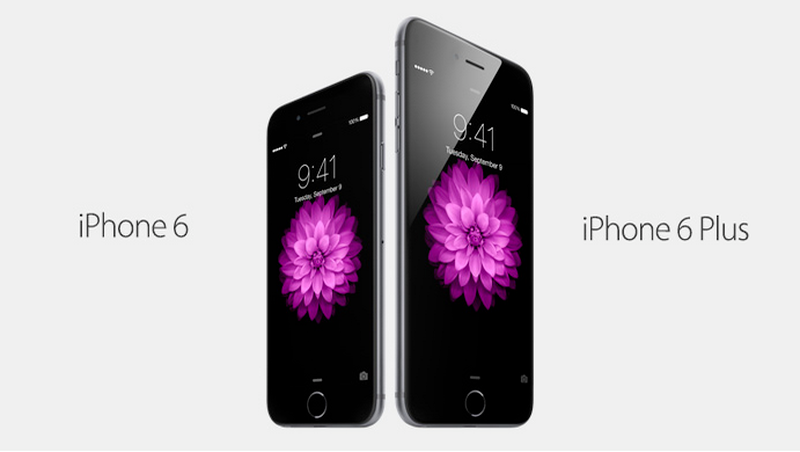The iphone 6 is one of the most cleanly designed iPhone. It is the perfect mix of form and function and offers phenomenal angles for taking pictures.
In this review, we will explore the iPhone 8 specs and features as well as the iPhone 8 Price in Nigeria. So you’ll be able to decide if this smartphone is suitable for you.
The iPhone 6 is one of the best-selling iPhone models and the most lucrative smartphone, thanks to its strong sales.
The iPhone 6 include bigger 4.7 and 5.5 inches (120 and 140 mm) screens, a quicker CPU, enhanced cameras, better LTE and Wi-Fi connection, and capability for mobile payments based on near-field communications.
The iPhone 6 got favourable reviews, with detractors noting advancements over earlier iPhone models in terms of redesign, features, camera, and battery life.
The standard-sized iPhone 6’s screen resolution was criticized for being lower than that of other handsets in its class, and plastic strips interrupted the metal body of the device on the back where the antenna was located.
In February 2017, the iPhone 6 was reintroduced as a midrange/budget iPhone in Asian areas with 32 GB of storage.
Before entering the US market in May 2017 and the Canadian market in July 2017, it was first expanded to Europe.
Before iOS 13 replaced them, iPhone 6 supported iOS 8, 9, 10, 11, and 12. They were the third iPhone after the iPhone 4S and the iPhone 5 to support five different iOS versions.
492 People are Reading: How Much is iPhone 13 Price in Nigeria for Uk Used & New
iPhone 6 Price in Nigeria
The iPhone 6 price in Nigeria in Nigeria ranges between NGN50,400 Naira to NGN80,000 Naira depending on the model and the vendor you’re buying from.
How Much is iPhone 6 in Nigeria UK Used
The iPhone 6 price in Nigeria for UK used starts at NGN54, 000 Naira to NGN67,000 Naira depending on the model and the vendor you’re buying from.
How Much is iPhone 6 in Nigeria on Konga
The iPhone 6 price in Nigeria on Konga starts at NGN64,000 Naira to NGN77,000 Naira depending on the model and the vendor you’re buying from.
How Much is iPhone 6 Price in Jumia, Nigeria
The iPhone 6 price in Nigeria on Jumia starts at NGN53,000 Naira to NGN60,000 Naira depending on the model and the vendor you’re buying from.
iPhone 6 Price in Slot, Nigeria
The iPhone 6 price in Nigeria on Jumia starts at NGN52, 000 Naira to NGN63,000 Naira depending on the model and the vendor you’re buying from.
The iPhone 6 Journey
Up to the release of the iPhone 4S, iPhones had 3.5-inch displays, which are smaller than the flagship phones from other companies.
The display of the iPhone 5 and its immediate descendants was 4 inches diagonally and was higher but the same width as previous versions.
Reports from as early as January 2014 stated Apple was getting ready to introduce new iPhone models with larger, 4.7-inch and 5.5-inch displays as a result of the company losing market share to manufacturers of smartphones with larger displays.
Near-field communications, a feature that has been included in many Android phones but has had a low acceptance rate, may have been introduced by Apple utilizing a new iPhone model, according to reports prior to its debut.
Pre-orders for the iPhone 6 started on September 12, 2014, with the iPhone 6 starting at US$649.
The device was formally unveiled on September 9 at a press conference at the Flint Center for Performing Arts in Cupertino, California, and went on sale on September 19, 2014.
Apple informed local wireless carriers it would be unable to release the iPhone 6 on the 19th due to “details which are not ready.”
Local media reported the devices had not yet been approved by the Ministry of Industry and Information Technology, and earlier in the year, a news report by state-run media claimed the iPhone 5C and 5S were the first models in the iPhone series to be released in the country on the same day as their international launch.
The iPhone 6 was relegated to the middle of the iPhone lineup on September 9, 2015, with the introduction of the iPhone 6S and iPhone 6S Plus.
The 16 GB and 64 GB models of the iPhone 6 and iPhone 6 Plus in silver and space grey were still available for purchase at a discounted price, despite the 128 GB versions of the iPhone 6 and iPhone 6 Plus being discontinued along with the gold versions of both phones.
When Shenzhen Baili, a Chinese gadget manufacturer, claimed that the iPhone 6 violated its design patent in June 2016, Apple was threatened with a possible sales ban in China.
When Apple unveiled the iPhone 7 and iPhone 7 Plus on September 7, 2016, the iPhone 6 was discontinued, and the first-generation iPhone SE replaced them as the entry-level iPhone model.
It was a unique circumstance when, while being billed as a lower-tier iPhone, the iPhone SE was offered alongside the iPhone 6 and 6 Plus until September 7 despite having more powerful internal hardware than the midrange iPhone 6 (which is virtually the same as the 6S).
The iPhone 6 was covertly reissued in February 2017 at carrier shops and online, with 32 GB of storage instead of 16 GB. It was offered for sale on Amazon in Space Grey. On March 10, it went on sale through Taiwan Mobile in the golden hue.
It was made available to Belarus via the i-Store website in the EU around the middle of March. Additionally, it is available in North America through AT&T GoPhone, Boost Mobile, and Virgin Mobile, US prepaid carriers that are owned by Sprint. These aren’t being sold by Apple in their shops or on their website.
iPhone 6 Design

The iPad Air’s design, which features a glass front that curves around the edges of the display and an aluminium back with two plastic strips for the antenna, is a design inspiration for the iPhone 6 and iPhone 6 Plus.
The rear is constructed from aluminium 6000 series. Both types are available in “space grey,” silver, and gold finishes.
The iPhone 6 is slimmer than the iPhone 5c and iPhone 5s, with the iPhone 6 being the thinnest Apple device to date at 6.9 millimetres (0.27 in) and 7.1 millimetres (0.28 in).
iPhone 6 Display
The displays on the iPhone 6 have undergone the most significant changes. The iPhone 6’s display is 4.7 inches in size with a 16:9 resolution of 1334×750 (326 PPI, minus one row of pixels), while the iPhone 6 Plus has a 5.5-inch 1920×1080 (1080p) display. Both are branded as “Retina HD Display” and “ion-strengthened” displays (401 PPI).
The displays make use of a multiple-domain LCD panel known as “dual-domain pixels,” which skews the RGB pixels such that each pixel is visible from a different perspective. This method aids in enhancing the display’s viewing angles.
The top button was changed to the “side button” and relocated to the side of the phone rather than the top to better match the bigger physical dimensions of the iPhone 6.
iPhone 6 Batteries
The iPhone 6’s battery is 6.91 Wh (1,810 mAh), The battery cannot be removed and replaced by the user.
iPhone 6 Chipsets
Both versions use the updated M8 motion co-processor from the iPhone 5s and an Apple A8 system-on-chip.
The M8 additionally has a barometer to track changes in altitude, which is the main distinction between the M8 and the original M7 coprocessor.
According to Phil Schiller, the A8 chip will offer a 25% improvement in CPU performance, a 50% increase in graphics performance, and reduced heat emission when compared to the 5s.
The A8 scored 21204.26 in Base mark X compared to 20253.80, 10973.36, and 5034.75 on the 5s, 5 and 4s, respectively, suggesting that the GPU performance may indeed deviate from prior generations’ doubling of performance at each yearly release.
Connectivity
The iPhone 6 upgraded extended LTE connectivity, known as LTE Advanced, supports up to 150 Mbit/s of download speed, over 20 LTE bands (seven more than the iPhone 5s), and VoLTE.
Capabilities for 802.11ac standards have increased Wi-Fi performance by enabling rates of up to 433.0581 Mbit/s, which is up to three times faster than 802.11n[43], and Wi-Fi Calling support when available.
With the iPhone 6 and iPhone 6 Plus, near-field communications are now supported (NFC).
It is originally only used for Apple Pay, a brand-new mobile payment solution that enables customers to save their credit cards in Passbook for use with online transactions and in-person retail transactions using NFC.
Limited usage of near-field communications was added to iOS 11 in addition to Apple Pay for third-party apps.
iPhone 6 Camera
While the iPhone 5s could only record at 30 and 120 frames per second, the iPhone 6’s rear-facing camera can now capture 1080p Full HD video at either 30 or 60 frames per second and 720p HD slow-motion video at either 120 or 240 frames per second.
The rear-facing camera on this model is somewhat protruding as opposed to being flush with the device’s back as it was on earlier models.
While a video is being recorded, still images can be taken. These have a 4-megapixel resolution (2720 x 1532).
Sensors
The barometric sensor is a feature exclusive to the iPhone 6.
The iPhone 6 has an accelerometer, gyroscope, front-facing proximity sensor, and a digital compass, the same as the model it replaces.
Memory
According to iPhone 6 teardowns, both devices still have the same 1GB of RAM as the iPhone 5s.
Other features
The iPhone 6 maintained Touch ID, Apple’s fingerprint-based security feature, just like the iPhone 5s. On the iPhone, Touch ID is used in place of a passcode to speed up device unlocking and safeguard important app data.
Along with the Near Field Communication (NFC) antenna included in every iPhone 6, Touch ID and Apple’s mobile payments program, Apple Pay, are also essential components of the iPhone 6 line.
With just a fingerprint, customers will be able to make payments at thousands of retail locations thanks to Apple Pay.
Running System
The iOS 8 operating system, which made its debut for older devices only days before the iPhone 6 launch, was first included with the iPhone 6. The iPhone 6 started selling with iOS 9 in September 2015.

